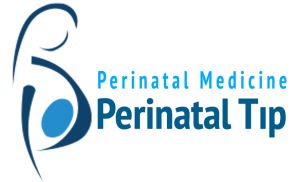
Down Syndrome Screening – Nuchal (Nape) Thickness – Dual Test
Down Syndrome Screening – Nuchal (Nape) Thickness – Dual Test
 Various screening methods have been developed for Down syndrome, the first of which was advanced maternal age. At first, pregnant women over the age of 37 and later on formed the risk group for Down syndrome. It was aimed to diagnose Down syndrome by performing amniocentesis in this group of pregnant women.
Various screening methods have been developed for Down syndrome, the first of which was advanced maternal age. At first, pregnant women over the age of 37 and later on formed the risk group for Down syndrome. It was aimed to diagnose Down syndrome by performing amniocentesis in this group of pregnant women.
However, this group of pregnant women constitute only 5% of the general population and 30% of the babies born with Down syndrome. The rest are born from pregnancies under the age of 35. In order to diagnose babies with Down syndrome in this group in early pregnancy periods, 16-21. AFP, UE3, HCG biochemical parameters measured between gestational weeks, “Triple Screening Test” has been put into practice. The aim of this test is to determine the pregnancies that constitute a risk group for Down syndrome by evaluating the triple parameter with maternal age. With the Triple Screening Test, only 60% of pregnancies with Down syndrome can be recognized. For this reason, other scanning methods have been the subject of research. Among the first trimester biochemical parameters, beta-HCG and PAPP-A have now taken their place in clinical practice. 11-14 on the other hand. The measurement of nuchal thickness in the ultrasonographic examination performed during the gestational weeks has taken its place as an effective screening test not only in Down syndrome but also in other chromosomal anomalies and even non-chromosomal fetal anomalies. 11-14 days of pregnancy with maternal age. The nuchal screening test, which is 80% effective against 5% invasive test in chromosomal anomalies with the evaluation of the nuchal thickness measurement in the first weeks of gestation, was defined by Nicolaides. When beta-HCG and PAPP-A are added to the nuchal thickness, the efficiency rises above 90%.
Nuchal thickness measurement, 11-14. It can be easily done with transabdominal ultrasonography during pregnancy weeks. However, sometimes adequate images cannot be obtained in obese patients and transvaginal ultrasonography can be applied under these conditions. 11-14 days of pregnancy. The position and posture of the fetus in weeks of gestation are quite suitable for the measurement of apical-breech (CRL) and nuchal thickness by transabdominal ultrasonography (Picture-25, 26 CRL measurement). In nuchal measurement, when the following points are taken into consideration, both the most accurate and the easiest and fastest measurement will be made. The fetus must be visualized to cover at least ¾ of the screen. As the plan, the sagittal plane should be taken, in which the spinae can be seen along the entire line. This plan is also the plan required for CRL measurement. This feature should be easily known and applied by all sonography practitioners. The other issue is; is to distinguish between fetal skin and amniotic membrane, that is, to observe them separately. Failure to do so will result in erroneous measurements. If spontaneous fetal movements are expected, or if the fetus is moved by coughing the pregnant woman or by gently blowing the abdominal wall with the fingertips on the uterus, separation of the fetal skin and amniotic membrane can be observed and displayed separately. In general, at this gestational week, the fetus lies in a hammock on the amniotic membrane. Both CRL and nuchal thickness are measured in the sagittal plane and under conditions where the fetal skin and amniotic membrane are imaged separately. The distance to be measured is between the fetal skin and the soft tissue covering the spinae. During these gestational weeks, both structures appear as a thin membrane. Membranes will become better visible by not creating too much echogenicity. In these conditions, the measurement is obtained by marking on both membranes. The maximum measurement thus obtained is based on. At the same time, the nuchal thickness, CRL, and the image on the amniotic membrane should be printed and stored in the patient’s file. The resolution level of ultrasonography devices produced in recent years is sufficient to obtain clear and accurate images. It has been a matter of debate whether there is a difference between practitioners who measure. It was found that there was a difference of 0.54 mm between the two measurements and 0.62 mm between individuals. Accurate measurement is unavoidable if attention is paid to careful placement of the marking on the membranes, based on the case where the membranes are visible separately, observing the sagittal plan, and covering at least ¾ of the screen of the screen. During the inspection, it would be appropriate to verify with several consecutive measurements. The nuchal thickness measurement with these conditions can be easily done by any practitioner who can measure CRL.
The nuchal thickness shows increasing parallelism with the gestational week. For this reason, the nuchal thickness normal will change according to each gestational week. However, if you want to give a rough figure, 2.5 mm average is the normal acceptable limit. However, even if this is the case, it is not correct to evaluate the nuchal measurement as normal or pathological and should not be meaningful on its own. Because the current risk increases with the increase of nuchal thickness or decreases with its decrease. The more the nuchal thickness deviates from normal, the greater the risk. The greater the deviation from the normal nuchal thickness, which is specific to each gestational week, the more it corresponds to a varying probability coefficient. The new risk is calculated by multiplying this coefficient with the current risk. A computer program has been developed for these calculations. Ultrasound users, who successfully completed the early fetal ultrasonography courses jointly established by the Fetal Medicine Foundation from the UK, Turkish Perinatology Society and the Obstetrics and Gynecology Ultrasonography Association, and then completed their practical training in the relevant centers, receive certificates for their training on the relevant subject and computer programs for use in clinical applications. providing assistance. At regular intervals, the work of these users is supported and supervised by both organizations. Thus, difficulties in practice are helped and the latest knowledge is added.
The King’s College group, which published their studies, found nuchal thickness above the 95% percentile in 80% of trisomy-21 cases in a series of 1273 cases. Similar results were obtained in subsequent studies. In a multicenter study of 20804 cases performed at 10-14 GH as a screening program; It has been reported that nuchal thickness increases with gestational age in normal pregnant women, and increased nuchal thickness is detected in chromosomal anomalies. Again, it was determined that the calculated risk in 5% of the cases was 1/100 or more and 80% of these cases were trisomy 21 and 77% had other chromosomal anomalies. As of June 1997, the number of pregnant women screened by a multi-center study composed of 27 centers from different countries, organized by the Fetal Medicine Foundation, reached 100,311. In this study, the efficacy for trisomy 21 was around 82% when a threshold value of 1/300 was taken. For other chromosomal anomalies, it varies between 65% and 89%.
The parameters used in the nuchal test are maternal age, gestational age, history of baby with trisomy, nuchal thickness and ultrasonographic fetal anomaly findings. As it is known, in cases with a baby with trisomy anamnesis, the current risk (existing risk according to maternal age and gestational week) is added to 0.75% to calculate the new risk. A new risk is found by multiplying the coefficient obtained by the nuchal thickness measurement with the last risk. If there is a separate coefficient for each of the fetal anomalies detected in the ultrasonographic examination, and the final risk value is found by multiplying with the last risk at hand. This method is called “Sequential Scan”. When beta-HCG and PAPP-A are added to the nuchal screening program at 11-14 weeks, the effectiveness for trisomy 21 rises above 90%.
In addition, Doppler, nasal bone, facial angle, cardiac examination and early anatomy examination, as well as more sensitive and highly specific perinatal ultrasound examination, which is applied in Perinatology Centers, have now been put into practice. In cases where the Down Syndrome risk calculated by nuchal thickness and biochemistry is less than 1/1000, the majority of pregnant women agree that the risk is at an acceptably low rate. However, in cases with a risk greater than 1/1000, there are difficulties in deciding on the invasive test. In these cases, the 11-14 week examination by the Perinatology Specialist largely resolves this situation. As a matter of fact, an advanced Perinatal Ultrasound examination contributes to the solution by revealing nuchal thickness, nasal bone, ductus venous, tricuspid regurgitation, facial angle, minor or major ultrasound markers and anomalies.
Increased Nuchal Thickness and Non-Chromosomal Anomalies
In a study conducted before the current understanding of nuchal thickness was established, cystic hygromas with and without septation were compared and the following results were obtained. Cystic hygroma without septation and cystic hygroma with septation were detected in 125 of 7582 fetuses screened, 98% of those without septation and 44% of those with septation disappeared in the future. Both structural and chromosomal anomalies were found more in the group with septation.
In a series of 565 cases with increased nuchal thickness and normal chromosomes; Cardiac anomalies, diaphragmatic hernia, kidney and anterior abdominal wall anomalies were found at a rate of approximately 4% and were higher than the normal population. On the other hand, in cases with increased nuchal thickness and observed as nuchal edema in later weeks of gestation; It has been reported that the risk of rare genetic syndromes such as Stickler syndrome, Smith-Lemli-Opitz syndrome, Jarco Lavine syndrome, and arthrogryposis is high. Necessary information about anomalies detected at 11-14 weeks of early pregnancy were discussed in the sections above. Considering the relationship between increased nuchal thickness, perinatal deaths, and survival determined based on evacuations due to fetal anomalies; While survival is 97% in cases with 3 mm nuchal thickness, it is reported as 53% in cases with nuchal thickness greater than 5 mm. As a result, nuchal test at 11-14 GW with maternal age replaces the most effective screening test for trisomy-21 with a sensitivity of 82%. It is a viable screening test for multiple pregnancies. It is also reported to be a good screening test for other chromosomal anomalies (Trisomy 18, 13, Turner, Triploidy and sex chromosome anomalies…) with a sensitivity ranging from 65% to 82%. Likewise, its usefulness in early detection of genetic syndromes is obvious.
With the provision of sufficient knowledge and education on early pregnancy ultrasonography, the way for routine clinical applications is cleared. With good practice, both the sensitivity of ultrasonography will increase and the number of unnecessary invasive procedures can be reduced.